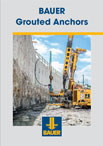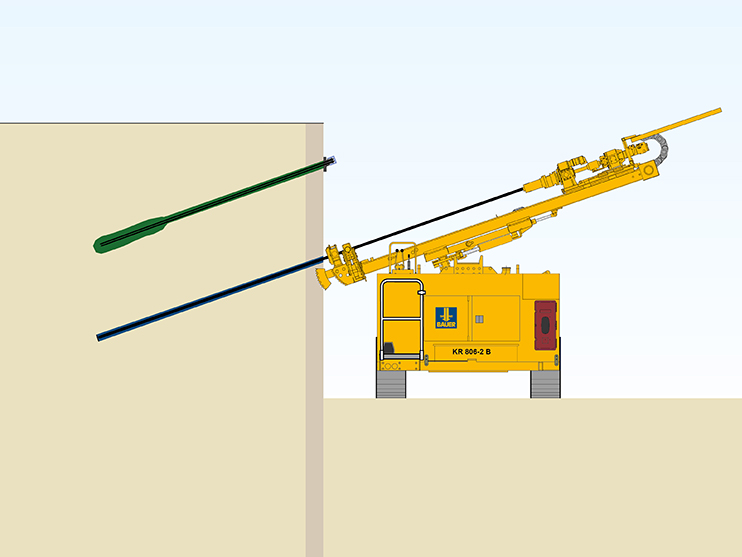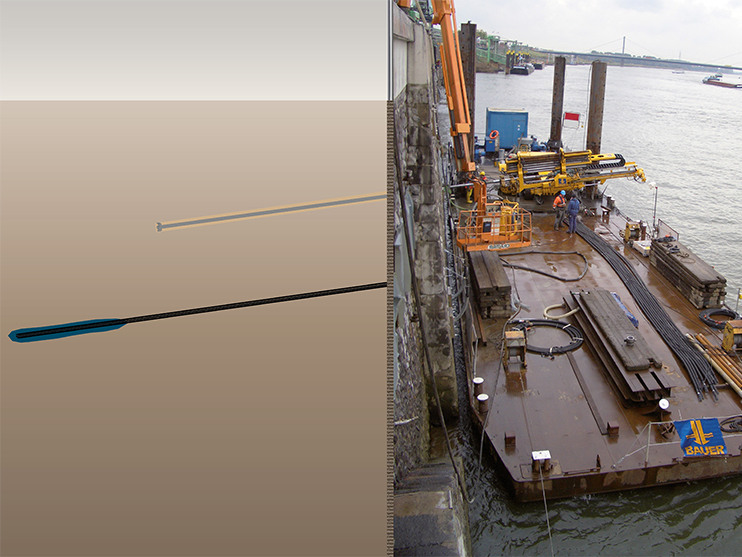Ground Anchors
The idea of installing retaining systems without tie-back anchoring is almost inconceivable nowadays.
Bauer revolutionized the special geotechnical works with its invention of the ground anchor in 1958. Excavation pits with no obstructive strutting have been the standard ever since. Today ground anchors are used to secure pile walls, sheet piles, Mixed-in-Place walls or diaphragm walls, as well as steep slopes, support embankments and quay walls. Installing ground anchors is a technically elegant, cost-effective and, above all, operationally efficient solution for many construction projects. Whether for temporary or permanent use, in single-rod or strand anchor configuration, in the dry or protecting against pressing groundwater, the Bauer ground anchor is usable in all kinds of soil and in rock. Experienced, continuously trained drilling crews, high-performance special equipment and comprehensive quality control ensure rapid, technically fault-free execution of Bauer ground anchors.
Types of the Construction Method
Temporary anchors, in single-rod or strand anchor configuration, which can be removed fully or partially, are used to secure retaining walls for a maximum of two years. They are quick to install and highly cost-effective. The load-bearing behaviour of each anchor is tested and logged during the acceptance procedure. Strand anchors are delivered to the site in coils, which means they can also be used in tight operating environments.
Permanent anchors are ground anchors usable for longer than two years, and thus part of a permanent structure. Permanent anchors are executed as strand anchors, single-rod corrugated tube anchors or single-rod pressure tube anchors. The steel tendon and anchor head are protected against corrosion by special measures. Each hollow space in the anchor head is filled in with permanently plastic corrosion-proof compound.













